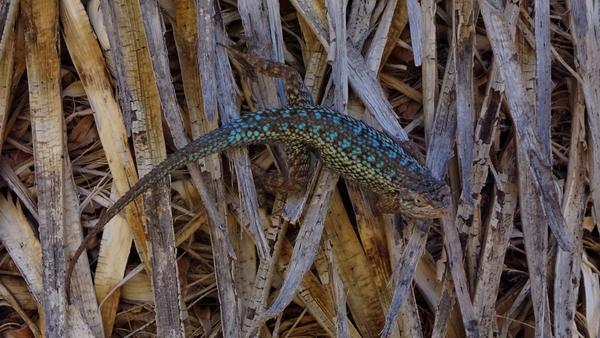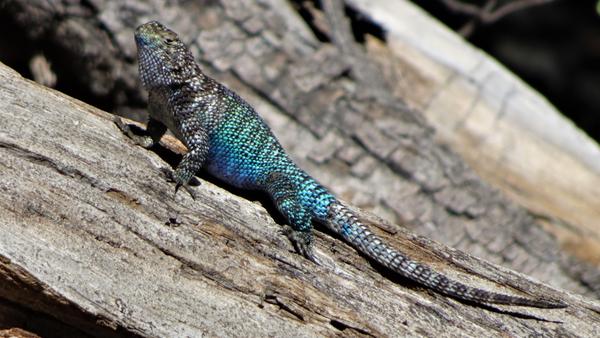The color tricks to attract a mate
"The sight of a feather in a peacock's tail, whenever I gaze at it, makes me sick." — Charles Darwin
Darwin did not disdain peacocks, rather he worried that they represented a serious challenge to his theory of natural selection. How could natural selection result in such gaudy oversized feathers that clearly represented a liability to the peacock’s ability to escape predators? Thinking through this problem, he developed a parallel theory to natural selection, one that did not contradict natural selection but supported it. He called it sexual selection. Darwin reasoned that those bright colors and extravagant adornments were selected by a female as an indication of the quality of the male’s genes that she could pass on to her offspring. The male’s ability to survive and thrive despite the handicap of those colors and adornments were testimony that he had the “right stuff."
Colors that decorate animals can have several functions. The most basic is to identify what species you are. Why waste time courting the wrong species? But you do not need bright colors, colors that potentially attract predators, just to know what species you might encounter. Those bright colors, both their intensity and coverage, are signals to females as to the fitness of the males they encounter. In an evolutionary sense, fitness is a measure of an individual’s ability to pass his or her genes on to the next generation. Brighter, more extensive colors are messages of the quality of the male and the territory the male might be defending, as his diet can be a direct link to his size and color intensity. Dull colors can indicate poor health or a poor-quality territory — things any discerning female would want to avoid. Rather than being passive prizes of the male’s conquests, it is the female directing this process. The females are making the choices that ultimately lead to the peacock’s tail, the feather adornments and elaborate, comical dances of birds of paradise, and ultimately the fitness of her offspring.
Bright colors are not limited to birds. Lizards along with other ectotherms (think cephalopods such as octopi) have skin cells called chromatophores that can be opened or closed, dramatically changing the animal’s color, sometimes quite rapidly. The classic examples in lizards are chameleons. Unlike popular belief, chameleons do not change color to blend in with their habitat, rather their color shifts reflect mood (fear, calmness, or amour) or hormonal shifts. Like peacocks, it is the male that displays the bright colors, and again it is the female who makes choices as to whether her suitor’s color is sufficiently bright enough to indicate high levels of fitness. If two males are facing off to battle for a female’s affection, they might both open their chromatophores to the maximum extent heightening their blue and purple throats, backs, and tails (in the case of our local fence and spiny lizards). However, as soon as one acknowledges that he is not the biggest and strongest, he will turn a muted gray or black.
Some lizards have another color trick, this time employed by the females. Mating in lizards can be a lengthy affair with the male trying to convince the female that he has the right stuff. This can involve displaying his color patterns to their maximum effect (push-ups showing his ventral colors), fighting with rival males, but also can include male-female chasing and wrestling. Such behaviors require the full attention of each participant, which means that they are not being vigilant to avoid predators. Not a good strategy to avoid being eaten, but necessary to evaluate the quality of a prospective mate and ultimately make choices that will maximize fitness. To limit the mating game to what is necessary, females of some lizard species produce hormonally induced color changes that indicate that they are carrying eggs (that they are gravid). These colors are typically vivid reds or oranges especially around their faces, flanks, but sometimes across their backs as well. The message to the males is that no amount of courtship can make them “more gravid," so do not bother trying. At least in my experiences, the males heed this message. I have watched male fringe-toed lizards race up to a gravid female only to dejectedly walk away. No chasing, no harassment. However, these bright colors seem, at first blush, to put the female in a compromised state, one of being then more obvious to predators and so more likely to be eaten. The answer to what seems to be a contradiction to the goal of better fitness is that many predators do not see the color red, and for most lizards these colors are only visible at lizard levels. From above most predators would only see cryptic gray and brown patterns.
Not all lizards change colors or use colors as a message in mating. Why not? Sometimes the lizard species are subjected to such high levels of predation that adding any obvious color would tip the balance toward becoming some predator’s meal rather than being able to mate and pass their genes on to the next generation. Horned lizards are an example. They are slow and sedentary, and superbly colored to match their habitat. Desert horned lizard populations match the dominant soil and rock colors in their habitat, indicating strong selective pressure to blend in rather than be seen. Any reds, purples or blues will blow their cover and make them easy prey by a passing predator. Although side-blotched lizard males will have some throat color, they too are heavily predated on and being cryptic is their primary means of avoiding being someone’s dinner. An exception is a species of side-blotched lizard residing on Isla Catalina in the Gulf of California; there are no mammalian and avian predators on the island and those males are dappled in bright turquoise dots. They have shifted from a strategy of being cryptic to avoid predation to being gaudy to attract the girls. Understanding the exceptions helps in understanding the primary selective pressures any species or population is dealing with in order to maximize their fitness.
Nullius in verba
Go outside, tip your hat to a chuckwalla (and a cactus), and be safe.


